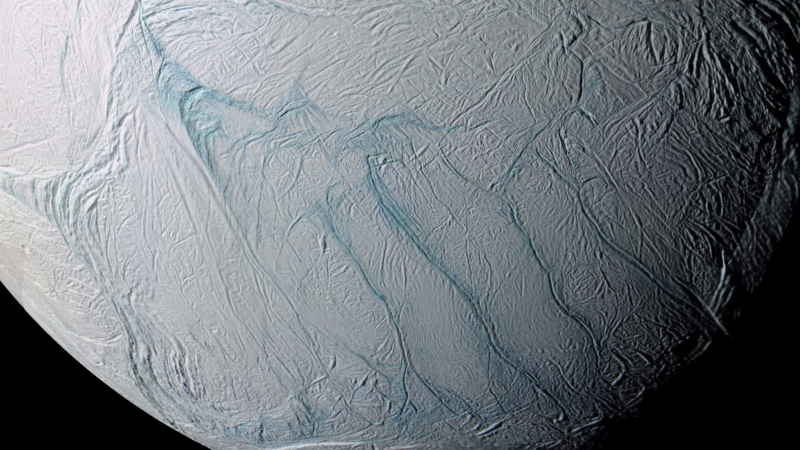On Saturn’s moon Enceladus, liquid water may be close to the surface
Ars Technica » Scientific Method 2017-03-14

Enlarge / The features at Enceladus' south pole that are associated with the geysers the moon releases into space. (credit: NASA/JPL-Caltech/Space Science Institute)
If you look at a diagram of the Cassini spacecraft, the most obvious feature is the high-gain antenna used for communication with Earth. But it also has a second, critical function, acting as part of the RADAR instrument that gave us our first glimpses of the surface of one of Saturn's moons, Titan. In 2011, during Cassini's closest pass over the moon Enceladus, RADAR got a good look at the moon's south pole, where geysers spew water into space.
At the same time, the instrument took a measure of the temperature in the area. An analysis of all that data suggests that the subsurface ocean that powers the geysers is very close to the surface at the south pole, only a few kilometers deep. And it may be kept close to the surface by a self-reinforcing behavior, even as individual geysers turn on and shut off.
RADAR was built to image Saturn's largest moon, Titan, which has a surface that is perpetually obscured by its hydrocarbon-rich atmosphere. It succeeded spectacularly, finding entire oceans of liquid methane. During the planning, it probably wasn't even clear that a small moon like Enceladus would have much in the way of interesting surface features. But the discovery of geysers that spew water out of large fissures at the moon's south pole focused a lot of attention on Enceladus and led to a very close flyby.